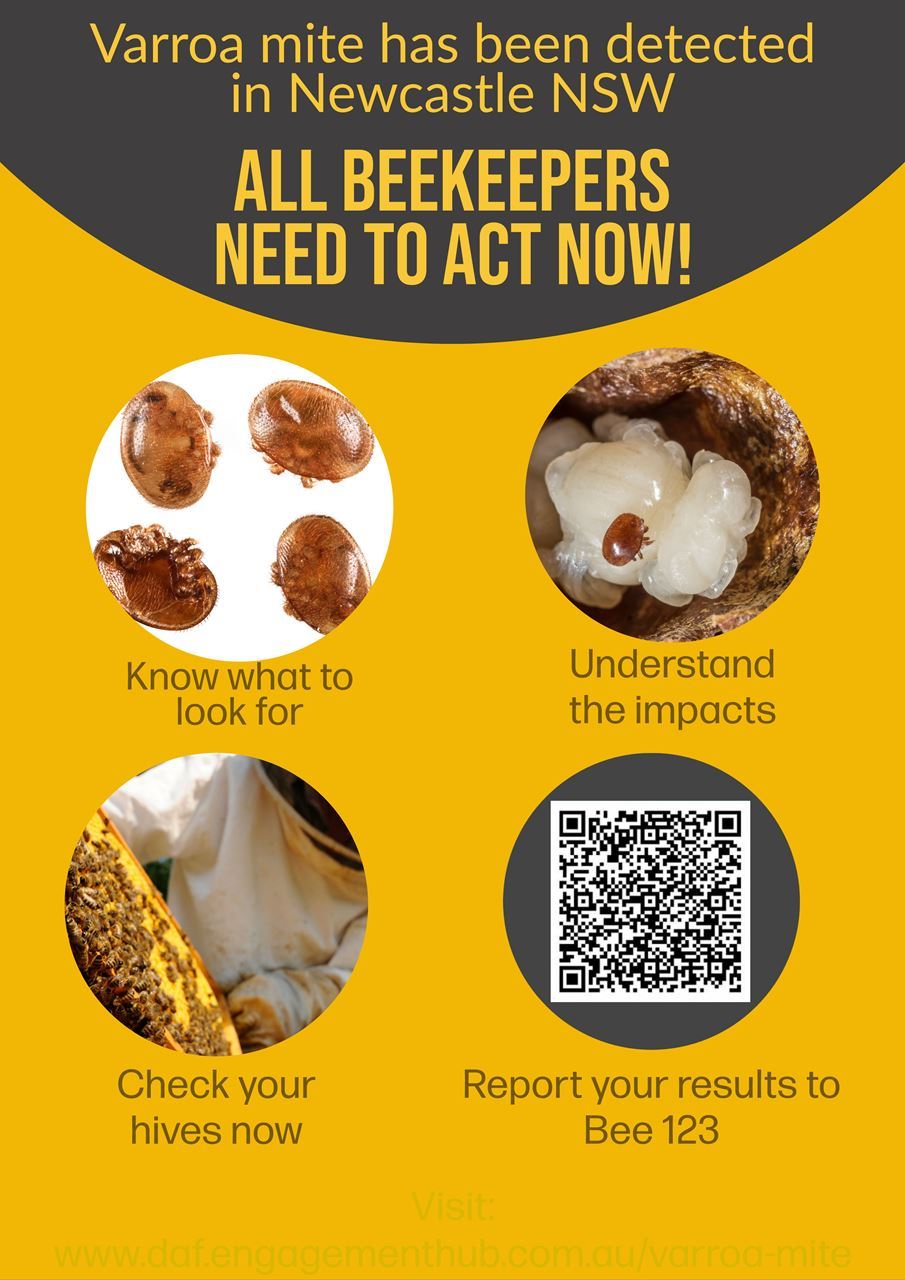
Varroa destructor was detected in Newcastle NSW on the 22 June 2022. Varroa mite presents a significant threat to Australian honey bees. The parasitic mite is a host to a number of diseases yet to reach Australian shores.
In response to the detection a large scale national program was initiated to attempt to eradicate the mite. After 16 months of response the Consultative Committee for Emergency Plant Pest (CCEPP representatives of all signatories to the Emergency Plant Pest Response Deed) and unanimously reached a conclusion that due to a number of trigger thresholds for technical feasibility of eradication being met and exceeded it was no longer feasible to continue with the eradication and Industry would commence transition to managing varroa mite.
In order for the Queensland honey bee industry to remain confident of the containment of the mite to the prescribed biosecurity zones in NSW, every beekeeper in Queensland must be on watch for this tiny enemy.
Beekeepers are urged to take immediate action and undertake surveillance for varroa now. Report all surveillance results including your negative data.
Although it will take some years before varroa is endemic across Queensland, every Australian household will eventually feel the impacts of the mite.
Varroa mite will change the face of Australian beekeeping. The mite presents one of the most significant challenges within our industry, and will have multi-billion dollar impacts the agricultural sector and every Australian household feeling the pinch from the rising cost of living.
Industry (QBA) and Government are working closely together on the national response to varroa as we navigate the challenges associated with learning to live with the pest. For more information on varroa and the Queensland response, please visit the Queensland DAF engagement hub: https://daf.engagementhub.com.au/varroa-mite
General Pest and Disease Updates


